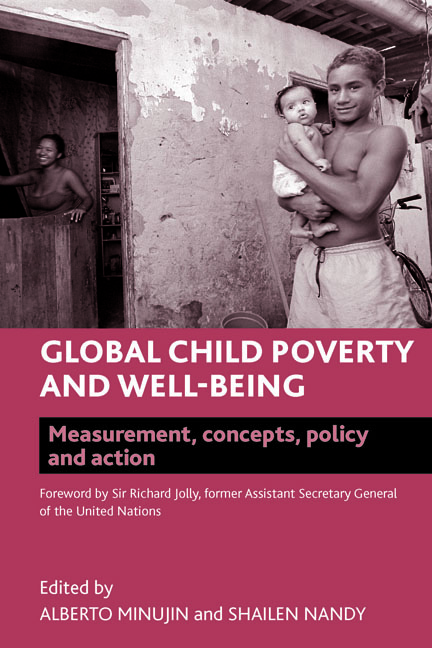twenty - Policy implications of multidimensional poverty measurement in Morocco
Published online by Cambridge University Press: 07 September 2022
Summary
Background
During the past 20 years, official poverty rates have changed significantly in Morocco. They increased from 13% to 16% between 1991 and 2001 and then fell to 9% by 2007 (HCP, 2009). The increase between 1991 and 2001 was partly a result of slow economic growth and a decline in household expenditure (World Bank, 2001). Faster economic growth in the following decade coincided with increased household expenditure, and therefore a significant drop in the poverty rate. Total annual household expenditure increased by 2.7%, and total annual expenditure per capita by 5% between 2001 and 2007 (HCP, 2009).
Even though poverty declined significantly during the last decade, tackling poverty remains a policy priority in Morocco. In 2005, Morocco Government launched a National Human Development Initiative, and a National Observatory for Human Development was created in 2006 to monitor human development policies, to strengthen the evaluation of public social policies and to recommend any necessary changes.
Poverty statistics are regularly updated in Morocco providing estimates of the number of people living below the national poverty line and those classified as vulnerable to poverty. However, there are two main problems with these official data: one is the limited unidimensional monetary approach that assumes that the whole population experiences poverty in the same way; the second is a complete absence of data on child poverty. The official national poverty line approach assumes that income is shared equally among all household members, regardless of their age, gender, etc.
Except for a recent Social Policy and Child Rights Forum held by the National Child Rights Observatory and UNICEF, child poverty has never been publicly discussed by policy makers. (UNICEF, ONDE, 2009)
This research represents the first analysis of child poverty in Morocco based on three methods for identifying poor children: a monetary approach using the national poverty line methodology; a deprivation approach based on a child deprivation index; and a combined multidimensional measure including both monetary and deprivation dimensions. The results are based on a secondary data analysis of the 2001 Household Expenditure and Consumption Survey (HCP, 2001a).
Poverty measurement practice in Morocco
Since gaining independence in 1956, poverty in Morocco has been measured using a monetary approach, based on expenditure per capita (Touhami, 2005).
- Type
- Chapter
- Information
- Global Child Poverty and Well-BeingMeasurement, Concepts, Policy and Action, pp. 507 - 524Publisher: Bristol University PressPrint publication year: 2012



